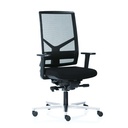Circulatory Problems - Thrombosis and more
ABOUT CIRCULATORY PROBLEMS
When work and lifestyle dictates sitting in the same position for prolonged periods of time it is not uncommon for some to present with severe circulatory problems resulting in swelling legs. Although prolonged sitting is unhealthy and best avoided there are professions and lifestyle preferences which trigger off an onset of these potentially disconcerting conditions.
STATS AND FACTS
Stats are alarming considering that there is reliable data available which validates the fact that those who spend four or more hours sitting in a day invariably present with a 50 percent higher risk of death. Concurrently the risk of heart disease chest pain may increase by a staggering 125 percent. This makes it more than evident that blood circulation problems and swelling legs are a reality and here to stay. Thus it is scarcely surprising that avoiding prolonged sitting goes a long way towards healthy living.
THROMBOSIS DEMYSTIFIED
In an era of technology and internet one click transactions and automated convenience options have made it far more convenient to continue reclining in the same position for hours rather than walking and working out. One of the most disconcerting and potentially dangerous medical conditions is Deep Vein Thrombosis or DVT as it is more commonly connoted.
Medical experts are of the opinion that a large clot forms deep in the body predominantly in the lower leg. The more specific location of this blood clot is invariably one of the larger veins and is an outcome of prolonged sitting such as during a flight or while working at a call centre.
Deep Vein Thrombosis is best identified by the presence of a local rise in temperature thus the region is warm to touch. Concurrently there may be some very severe pain in the region of thrombosis and a significant swelling of the leg or oedema as it is better connoted in medical parlance.
What makes this type of thrombosis all the more alarming is not that it causes swelling of the legs or that it is one of the blood circulation problems. On the contrary the fact that the clot formed due to thrombosis can dislodge from the present site and then circulate in the bloodstream to lodge in the heart or the brain makes it a life-threatening emergency. This is best prevented by either keeping active or alternatively using ergonomic correction options.
THROMBOSIS DEMYSTIFIED
In an era of technology and internet one click transactions and automated convenience options have made it far more convenient to continue reclining in the same position for hours rather than walking and working out. One of the most disconcerting and potentially dangerous medical conditions is Deep Vein Thrombosis or DVT as it is more commonly connoted.
Medical experts are of the opinion that a large clot forms deep in the body predominantly in the lower leg. The more specific location of this blood clot is invariably one of the larger veins and is an outcome of prolonged sitting such as during a flight or while working at a call centre.
Deep Vein Thrombosis is best identified by the presence of a local rise in temperature thus the region is warm to touch. Concurrently there may be some very severe pain in the region of thrombosis and a significant swelling of the leg or oedema as it is better connoted in medical parlance.
What makes this type of thrombosis all the more alarming is not that it causes swelling of the legs or that it is one of the blood circulation problems. On the contrary the fact that the clot formed due to thrombosis can dislodge from the present site and then circulate in the bloodstream to lodge in the heart or the brain makes it a life-threatening emergency. This is best prevented by either keeping active or alternatively using ergonomic correction options.
SWELLING AND THROMBOSIS PREVENTION
Thus when swelling legs and thrombosis is due to a sedentary lifestyle the pick of options is to ensure prevention options like ergonomics and increased activity levels are adopted. To illustrate the case in point, those who are confined to a workstation for prolonged periods of time like in call centres may not have an option other than continuing to be inactive. The preferred option could be either changing position regularly or alternatively using ergonomically designed office chairs if circulatory problems like thrombosis and swelling legs are avoided.
The benefits of such chairs is known to have a scientific temper considering that it limits or minimises the pressure exerted and hence minimizes the possibility of swelling legs and thrombosis per se. The more effective ergonomic chairs usually have a whole range of movement that can be adjusted to the user’s height and weight and allows them to constantly adjust and change positions and thus minimises the blood circulation problems.
Sit-stand desks allow users to sit and stand as they work. This rests and activates different muscle groups which acts as a pump mechanism to circulate the blood. People vary between sitting and standing regularly throughout the day which helps circulation and puts minimal strain on the body.















